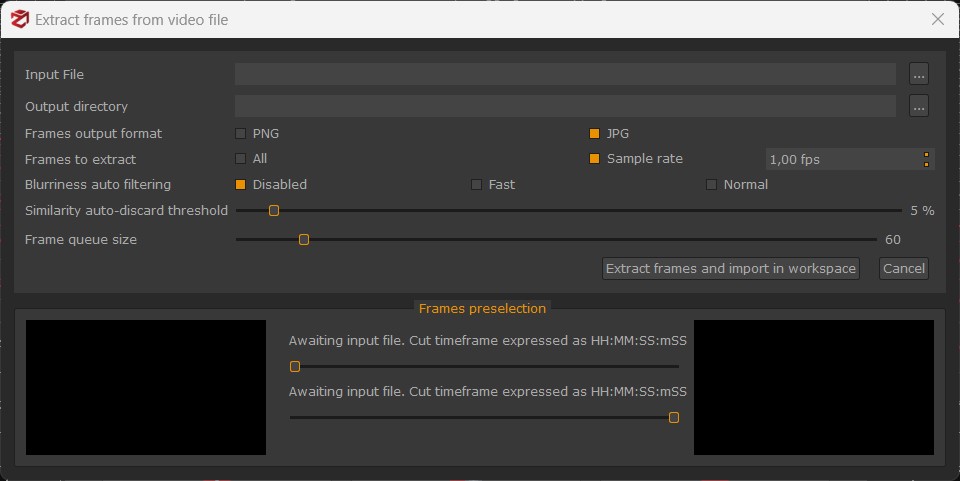Starting a project from a video
3DF Zephyr can work with images and video data. Although videos usually come with lower resolution, having a continuous video feed ensures overlap, making some datasets much easier to acquire that way. 3DF Zephyr will almost always yield better results with photos, but it's a useful feature to keep in mind.
3DF Zephyr offers an intelligent frames extraction tool: in the new project wizard, simply select "Import pictures from video" and the following window will appear:

Zephyr will automatically extract frames from videos (you can set a sampling rate indicated as frames per second or simply extract all the frames of the video, based on the framerate of this one) and treat them as normal images. Missing EXIF data is not a problem for Zephyr, as it is 100% autocalibrated. However, providing a manual device calibration may help, especially when dealing with fisheye lenses such as those of action cameras.
You can also enable a blurriness auto-filtering, which will discard frames that are too blurred and an auto similarity discard filtering, which will automatically discard frames that are too similar to each other.
The "frame queue size" is used to define the amount of memory to be used for frame queuing.
You may use the frame preselection toolset only to select a specific video part.